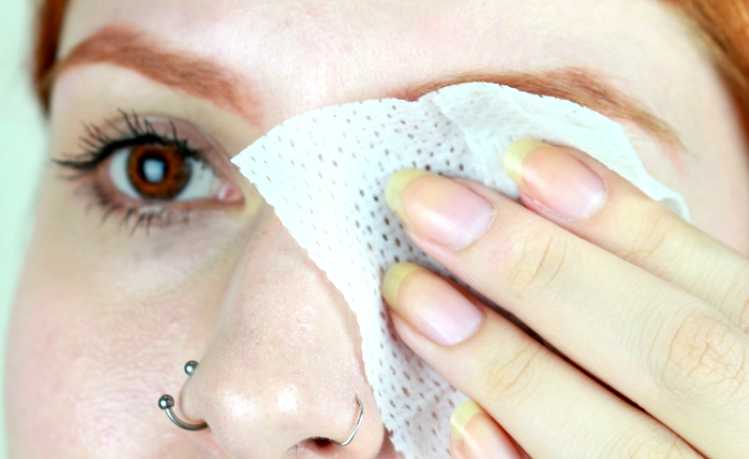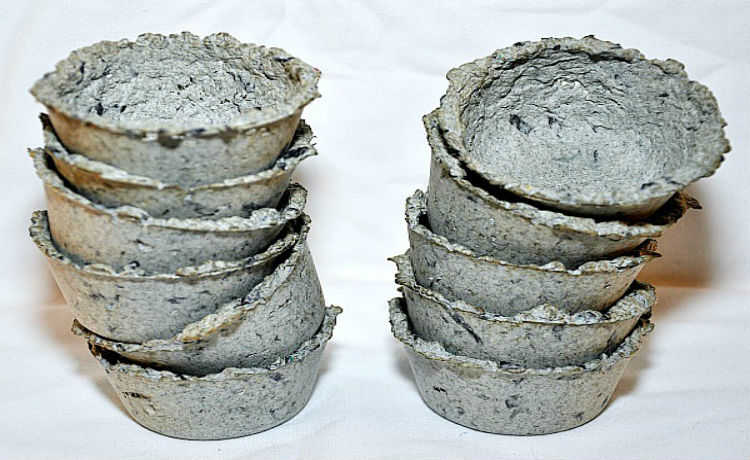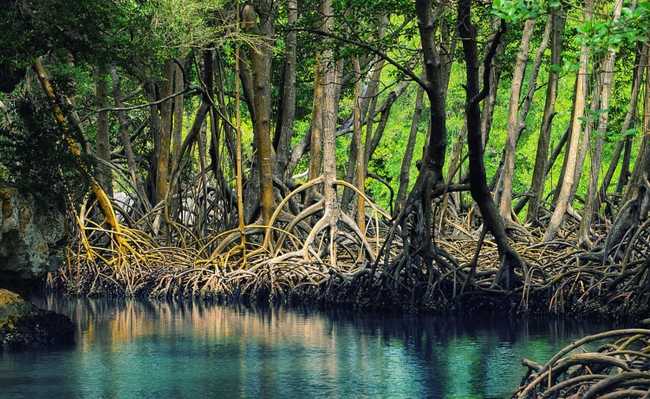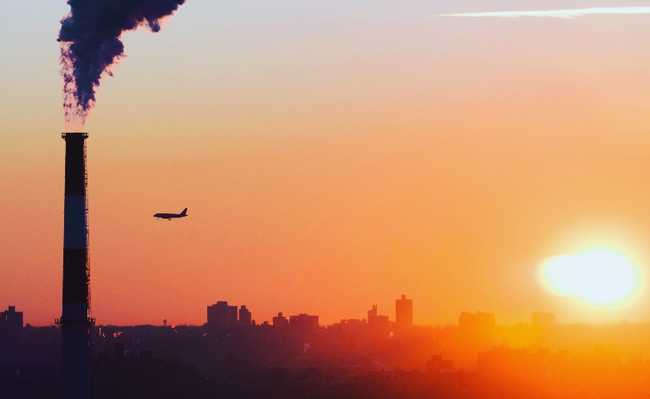What is a biome?
Biome is a biological unit or geographical space whose specific characteristics are defined by macroclimate, phytophysiognomy, soil and altitude

Lutfi A. Syam image on Unsplash
Biome can be defined as “a set of plant and animal life, consisting of the grouping of contiguous vegetation types that can be identified at a regional level, with similar geological and climate conditions and which, historically, have undergone the same processes of vegetation formation. landscape, resulting in a diversity of flora and fauna”, according to the IBGE. The word, first used in 1916, derives from the Greek bio, which means life, and Oman, group or mass.
In general, it can be said that biomes are large geographic spaces that share the same physical, biological and climatic characteristics, sheltering a large number of plant and animal species. The concept of biome arose from the observation of the evolution of plants and their various forms of growth, including the vegetation of dense forests, thickets, savannas, fields, steppes, deserts, among others.
Typically, biomes are defined or delimited according to the main vegetation that composes them. The environment occupied by the savannas, for example, is called the Savannah Biome. In some cases, the biome is marked according to other criteria, such as climate, soil types, among others. This happens with the Humid Tropical Forest and the Dry Tropical Forest, for example, which were named according to the rainfall regime in the region.
On our planet, there are several different types of terrestrial biomes, some of them are:
- Tropical florests;
- Tundras;
- taiga
- Temperate forests;
- Deserts;
- Savannas;
- Fields and Steppes;
- Mountains.
It is noteworthy that these biomes can include other smaller biomes that are part of them. In Brazil, for example, the Cerrado biome is part of the Savanna biome, while the Atlantic Forest Biome is part of the Tropical Forest, and so on. In addition to terrestrial biomes, there are also aquatic biomes. They are made up of communities of living beings that live in fresh or salt water in an adapted way to the local ecological conditions, such as the Aquatic Zones, the Continental Shelf, the Reefs and others.
Planet Biomes
Tundra
Tundra is a cold and inhospitable biome with sparse vegetation, mostly undergrowth. It is considered the coldest biome on Earth and is present at the top of the northern hemisphere of the globe, in the Arctic Circle region. The tundra makes up countries like Russia, Greenland, Norway, Finland, Sweden, Alaska and Canada. The main features of this biome are:
- High latitudes in the northern region of the planet;
- Ground almost completely frozen;
- Rigorous winter lasting approximately 10 months and extremely low temperature and short summer with positive temperatures;
- Flora composed of mosses, lichens and herbaceous plants;
- Fauna composed of polar bears, caribou, reindeer and lemmings.
taiga
The Taiga, also called Coniferous Forest or Boreal Forest, represents a typical type of high altitude vegetation, found in the northern hemisphere of the globe, more precisely between the Tundra and the Temperate Forest. This biome is present in the northern regions of North America, Europe and Asia, in countries such as Japan, Russia, Canada, Alaska, Greenland, Finland, Norway, Sweden and Siberia. The main features of this biome are:
- Located in the northern hemisphere, south of the Tundra;
- Cold and snowy weather in winter;
- Flora composed of deciduous pine and angiosperms;
- Fauna composed of lynx, hares, foxes, rodents and birds.
temperate forest
The Temperate Forest is a biome found in central Europe, southern Australia, Chile, eastern Asia, primarily Korea, Japan and some parts of China, and the eastern United States. It is also called Temperate Deciduous Forest or Deciduous Forest because the leaves fall in late autumn. The main features of this biome are:
- Located in the northern hemisphere, south of Taiga;
- Climate with four well-defined seasons;
- Stratified and deciduous flora;
- Fauna composed of deer, wild boar, foxes, squirrels and owls.
steppes
The Steppes are a type of undergrowth herbaceous vegetation formed by grasses dispersed in immense plains and that form a large vegetal mat. They appear in regions that generally have a continental and arid climate, being found in Europe, America, Central Asia and Africa. The main features of this biome are:
- Located in temperate and subtropical regions;
- Climate with four well-defined seasons;
- Flora composed of herbaceous plants;
- Fauna composed of herds in transition, rodents and reptiles.
deserts
Are classified as desert regions where rainfall does not exceed 250 mm per year. This condition, together with the loss of water through evaporation in the form of steam, makes these regions extremely dry. The temperature range is also extreme, ranging from very hot during the day to very cold at night. The main features of this biome are:
- Located in North Africa, Southern Europe and Australia;
- Dry climate, with very low rainfall and high thermal amplitude;
- Flora composed of sparse vegetation adapted to a dry climate;
- Fauna with low biodiversity (rodents, foxes and reptiles).
Savannas
Savannas correspond to a type of vegetation cover formed by undergrowth, where grasses, herbs, shrubs and sparse trees stand out. They are generally flat biomes found in the African, American and Oceania continents. The main features of this biome are:
- Located in Africa and Australia;
- Seasonal tropical climate with dry winter;
- Flora has 2 strata (arboreal and herbaceous);
- Fauna consisting of elephants, giraffes and lions.
Tropical forest
Tropical Forests are the biome with the greatest productivity and variety of species on the planet. They are also called Tropical Rainforest or Humid Forest, due to the high rainfall in the regions where they are located. They receive this name because they are located between the tropics of Cancer and Capricorn. The main features of this biome are:
- Located in South America, Africa and Southeast Asia;
- Humid tropical climate;
- Lush and stratified flora;
- Rich and diverse fauna.
Brazilian Biomes
Brazil has six biomes: the Amazon biome, the Caatinga biome, the Cerrado biome, the Atlantic Forest biome, the Pampa biome and the Pantanal biome.
Amazon
Occupying about half of the territory of Brazil, the Brazilian Equatorial Forest is concentrated in the North region and in part of the Midwest region of the country. This biome is highly influenced by the equatorial climate, which is characterized by low thermal amplitude (little temperature variation) and high humidity, resulting from evapotranspiration from rivers and trees.
The flora of this biome is composed of very rich and dense forest vegetation, which has species of different sizes with large and broad leaves that do not fall in autumn. The fauna, in turn, is also very diverse. It consists of insects, a multitude of species of birds, monkeys, tortoises, jaguars and others.
- What is the Amazon biome and its characteristics
Caatinga
Extending across the entire Brazilian hinterland, the Caatinga occupies approximately 11% of the national territory. It is the driest region in the country, located in the semi-arid tropical climate zone. The vegetation of this biome consists of xerophilic (accustomed to acidity) and deciduous plants (which lose their leaves during the driest period), in addition to some trees with large roots that can capture water from the water table, which prevents the loss. of leaves. The fauna of this biome is composed of a wide variety of reptiles.
thick
The Cerrado occupies a large part of the Midwest, Northeast and Southeast regions of the country. It is a biome influenced by the continental tropical climate that, due to the occurrence of two well-defined seasons (a hot and wet season and a cold and dry one), has vegetation with small trees and shrubs, twisted trunks, thick bark and, usually deciduous. The fauna of the region is quite diverse and consists of capybaras, maned wolves, anteaters, tapirs and seriemas.
Atlantic forest
The Atlantic Forest is a biome composed of a set of forests and ecosystems that correspond to 15% of the Brazilian territory. Since the time of discovery, this area has suffered from deforestation, fires and degradation. Today, the vegetation represents only 7% of the original forest area, with medium and large trees, constituting a dense and closed forest.
Considered one of the richest biomes on the planet, the Atlantic Forest is made up of plateaus and mountain ranges. Its area covers the east, southeast and south coast of Brazil and, in addition, a part of Paraguay and Argentina. According to data from the Ministry of the Environment, there are approximately twenty thousand plant species in this biome - this corresponds to more than 35% of the species existing in Brazil. There are bromeliads, begonias, orchids, ipe, palms, vines, bryophytes, jacarandas, jambos, pink jequitibás, cedars, tapiririas, andiras, pineapples and fig trees.
Furthermore, the fauna is very rich and diverse. According to research, the Atlantic Forest is home to 849 species of birds, 370 species of amphibians, 200 species of reptiles, 270 species of mammals and about 350 species of fish. Many of these animals are at risk of extinction, such as the golden lion tamarin, giant anteater, deer, opossum, small hyacinth macaw, otter, coati, jaguar, ocelot, capybara, among others.
pampa
Located in the southern region of Brazil, this biome is influenced by the subtropical climate and the formation of the relief, consisting mainly of plains. Due to the cold and dry climate, the vegetation is not able to develop, being composed mainly of grasses such as goat's beard grass, fatgrass and mimoso grass. Deer, heron, otter and capybara are examples of animals that live in this biome.
wetland
The Pantanal is the smallest Brazilian biome and the largest floodplain in the world. Classified by UNESCO as "World Natural Heritage" and "Biosphere Reserve", this region has great biodiversity. However, many animals in this biome are threatened with extinction, such as the jaguar, the puma and the hyacinth macaw. This biome is located in the Upper Paraguay River Basin and covers the Brazilian states of Mato Grosso and Mato Grosso do Sul, in addition to a small part of Bolivia and Paraguay.
The Pantanal's climate is characterized by a hot, rainy summer and a cold, dry winter. Thus, during the rainy season, the Pantanal is practically impassable by land, while during the dry season, the rivers dry up and there is clay left over. Thus, the soil that forms is used as pasture areas for cattle. The vegetation of this biome, depending on the altitude, involves grasses, medium-sized trees, low plants and shrubs.










